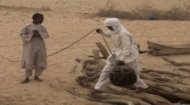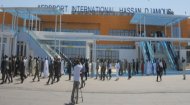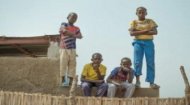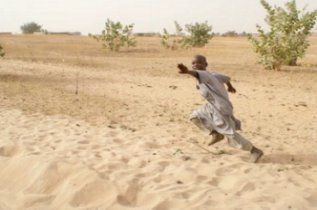|
Chad Profile |
Chad Profile |
Chad Profile | Chad Profile |
Check out all the latest fee paying and free volunteer work placements in Chad with local projects.
More >
Make a virtual landing at N'Djamena Airport where you will probably enter Chad for volunteering.
More >

Beyond external threats, Chad also grapples with internal conflict. Rebel groups, primarily operating from its northern and eastern borders, have periodically launched offensives, challenging the authority of the central government. Inter-communal clashes over resources, particularly land and water, are also a recurring issue, especially in the Sahelian belt, often exacerbated by climate change and population growth. These various forms of conflict contribute to internal displacement, hinder development, and divert vital resources that could otherwise be used for improving the lives of ordinary citizens. The pervasive nature of these security challenges makes achieving comprehensive stability an uphill struggle. Despite being three times the size of California, Chad has a population of 21 million (2025) and just 300 square miles of irrigated land with just 2.8% of the entire country being arable. Unlike other African countries, Chad is seen to offer little to the outside world, with its poor transport infrastructure including 33,400km of roads of which just 267km are paved. Chad also is off putting to visitors because of its high cost of living. Child trafficking for sexual and other exploitation remains a major concern about Chad and many children are taken for domestic servitude and other forms of labour both in Chad and to other neighbouring nations with children also brought in from Cameroon and the Central African Republic for the same purposes. Chad is in 190th place out of 193 countries and territories in 2025 when ranked in terms of life expectancy, literacy, access to knowledge and the living standards of a country with 44.8% of the population living below the national poverty line and extreme poverty at 36.5%. Chad's adult literacy rate is one of the lowest globally, with only 27.28% of adults aged 15 and above able to read and write. Life is tough in Chad. Most have grown up knowing violence and social instability, only 31.33% are literate dropping to 13.96% for females, those who go to school share their teacher with seventy other pupils, most don't have access to safe water and for the vast majority electricity is unknown (only 10% of the population has reliable electricity and that rate falls to about 1% in rural areas). The pervasive political uncertainty and the constant threat of conflict have a profound impact on the daily life of Chadians. For many, particularly those in rural or border areas, life is marked by insecurity, limited access to basic services, and economic hardship. The displacement caused by conflict forces thousands to abandon their homes and livelihoods, creating humanitarian crises and placing immense strain on already scarce resources in host communities. Children’s education is frequently disrupted by school closures or the need for families to relocate. Healthcare facilities are often rudimentary and understaffed, with access to essential medicines being a significant challenge. Despite these hardships, the resilience of the Chadian people is remarkable. Communities often rely on traditional support networks, and people find ways to adapt and survive amidst adversity, demonstrating incredible strength in their daily lives. Life expectancy for a child in Chad is just 55.07 years (2025) and the child mortality rate (under fives) for Chad was 113.8 deaths per 1,000 live births. Forced child labour is common with children having to work to help their family survive. Chad's social profile relects a nation of immense diversity, boasting over 200 ethnic groups and more than 100 languages. Arabic and French are the official languages, acting as crucial lingua francas across its vast territory. This rich cultural tapestry, while a source of strength, can also be a source of tension, particularly when resources are scarce or political power is perceived as unbalanced. Chad's economic profile is heavily dependent on oil, which accounts for the vast majority of its export earnings and government revenue. While oil production has provided significant income, it has also led to a lack of diversification in the economy, making the nation vulnerable to fluctuating global oil prices. When prices fall, the government faces severe budget constraints, directly impacting its ability to fund public services and development projects. Beyond oil, agriculture remains the backbone of the economy for the majority of the population, employing a large percentage of the workforce. However, this sector is largely rain-fed and vulnerable to climate change, including prolonged droughts and unpredictable rainfall patterns. Livestock rearing is also a significant activity, especially in the Sahelian regions. Efforts to diversify the economic profile into other sectors like mining, sustainable agriculture, and renewable energy are slow but critical for achieving long-term stability and improving the daily life of its citizens. Chad is also, unsurprisingly, home along with other countries to Lake Chad which shrunk as much as 95% from about 1963 to 1998 affecting the lives of millions who reply upon it for water and fish food supplies. The lake, fed by the Chari, Komadugu and Ngadda Rivers, is 2 m (6 ft 7 in) deep at its deepest point. Find out more about the country in our Chad profile pages above. |
 The largest political party at the time of independence was the Chadian Progressive Party based in the southern half of the colony and its leader, François Tombalbaye (right), an ethnic Sara, became the newly formed nation's first president.
The largest political party at the time of independence was the Chadian Progressive Party based in the southern half of the colony and its leader, François Tombalbaye (right), an ethnic Sara, became the newly formed nation's first president. Idriss Déby (left) attempted to introduce stability back into Chad by reconciling the rebel groups and reintroducing multiparty politics. A new consitution was approved by referendum and Déby won the presidential election of 1996, winning a second term five years later. However Déby then unilaterally modified the constitution to remove the two-term limit on the presidency, causing uproar among the civil society and opposition parties with a new civil war breaking out. He died on 20 April 2021, following an incursion in the northern region by the FACT group, during which he was killed amid fighting on the front line.
Idriss Déby (left) attempted to introduce stability back into Chad by reconciling the rebel groups and reintroducing multiparty politics. A new consitution was approved by referendum and Déby won the presidential election of 1996, winning a second term five years later. However Déby then unilaterally modified the constitution to remove the two-term limit on the presidency, causing uproar among the civil society and opposition parties with a new civil war breaking out. He died on 20 April 2021, following an incursion in the northern region by the FACT group, during which he was killed amid fighting on the front line.
















